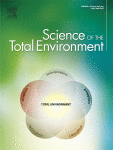Microbial resistance and resilience to drought and rewetting modulate soil N2O emissions with different fertilizers
Future climate models indicate an enhanced severity of regional drought and frequent rewetting events, which may cause cascading impacts on soil nitrogen cycle and nitrous oxide (N2O) emissions, but the underlying microbial mechanism remains largely unknown. Here we report an incubation study that examined the impacts of soil moisture status and nitrification inhibitor (DCD) on the N2O-producers and N2O-reducers following the application of urea and composted swine manure in an acid soil. The soil moisture treatments included 100 % water-holding capacity (WHC) (wetting, 35.3 % gravimetric soil water content), 40 % WHC (drought, 7 % gravimetric soil water content), and 40 % to 100 % WHC (rewetting). The results showed that N2O emissions were significantly decreased under drought conditions and were significantly increased after rewetting. The resistance of ammonia-oxidizing bacteria and nosZII, which was inhibited by urea or manure application, modulated N2O emissions under drought conditions. The resilience of the functional guilds modulated their dominant role in N2O emissions with rewetting. Ammonia-oxidizing bacteria, nirS-type denitrifying bacteria and nosZI showed significant resilience in response to rewetting. Significant negative relationships were observed between N2O emissions and nosZII clade under wetting condition and between N2O emissions and nosZI clade after rewetting. Our results highlighted the importance of microbial resistance and resilience in modulating N2O emissions, which help to better understand the dominant way of N2O emissions, and consequently make efficient mitigation strategies under the global climate change.

